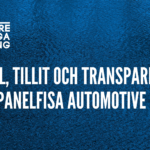Several times I hear people using those two words just as synonyms but this is not right. No wonder why many undertakings that aim to transform an organization end up by doing a simple change.
I usually get tired when people, that are at business meetings, start discussing the meaning of a word or the description of a particular thing because normally is just a waste of time, no value is added. But when it comes to distinguish between “transformation” and “change” I really think that it is crucial to understand the difference. Especially for people working with change management and organisational development, apart from leaders, of course.
I will explain the difference with some examples from the nature and from simple life just to illustrate and then apply the definitions to organizations.
A bear changes the fur when winter arrive and do it again when summer arrives. They are still the same animal but the skin has changed. All other parts of the body remain as they were, still two legs, two arms, etc. Or the migratory birds that change the place they chose to stay at different seasons. They might experience a different environment but their essence is still the same, they particular abilities or limitations will not change just because they move to another place.
Other example of change is when we paint a house, we change the color of the house but without doing anything else with the house, we can only say that we changed the color. And we can reverse the change, meaning painting the house again on its original color.
Transformation on the other hand is when e.g. a caterpillar turn into a butterfly. First a cocoon is build and after a while a butterfly comes out of it. What happens inside a cocoon? Well in the first place, the caterpillar digests itself and the cells that survive the process become eyes, wings, etc. When this transformation process is finished, a butterfly appears.
Or when we take a table, saw its legs and create a door with the piece of wood on the top and create the door frame with the legs. The excess is turned to firewood. This mean we transformed a table into a door, a door frame, and firewood.
In these two examples, it is very clear that there is no way back, the butterfly can’t become a caterpillar again and the table is just memory. Here the original components have been used to create something new, something different from what they were and that will serve a different purpose. This is my meaning of transformation!
Then what is the difference between organizational change and organizational transformation?
Moving people from one department to another, adding or removing a layer in the hierarchy, assigning new managers, creating or renaming roles, recruiting some new people, or slimming down the organization, is about change. The essence is still the same, nothing new has been created from the original components. That is the main reason for why many organizational changes have the tendency to go back to its previous state, it is like re-painting a house in the original color. Change managers job is too make us to like the new color or at least to accept it. They also want to convince us not to do spots on it like the saboteurs do and not to paint it again in the old color like the resistors do when they go back to the former state. Then they will use best practices based on previous experiences.
Organizational transformation it’s about changing the essence, about creating something new based on the old parts; it is about utilizing the potential and capabilities in a different way. People in the organization are also considered the “old parts” and competence development is what transforms people; not just a training but true competence development.
Transformation is also about daring to convert the legs of a table into a door frame without knowing exactly how is going to be or how is going to look like. The organization needs to replace the current state with something completely new and in many cases unknown.
To conduct organizational transformation, organizational developers or designers are needed. They need to have a deep understanding of what we have in order to create something new out of it. To use of best practices is not very helpful because organizational transformation is somehow unique. Of course, we need to learn from the past but if we are to focus on the best practices from our past experiences, we are limiting our future and transformation is about the future. A good thing is to remember that the Titanic catastrophe was caused by best practices. The Titanic was “the unsinkable new innovation”, but the crew acted as if they were in a normal boat when approaching an iceberg; they threw the engines into reverse and the rudder turned hard left. Why? It was just best practice!
Being able to successfully transform an organization requires a leadership style that operates with the eyes in the future but with a good understanding of the current state.
New ways of organising, OrgDev, Agile journeys, self-management




